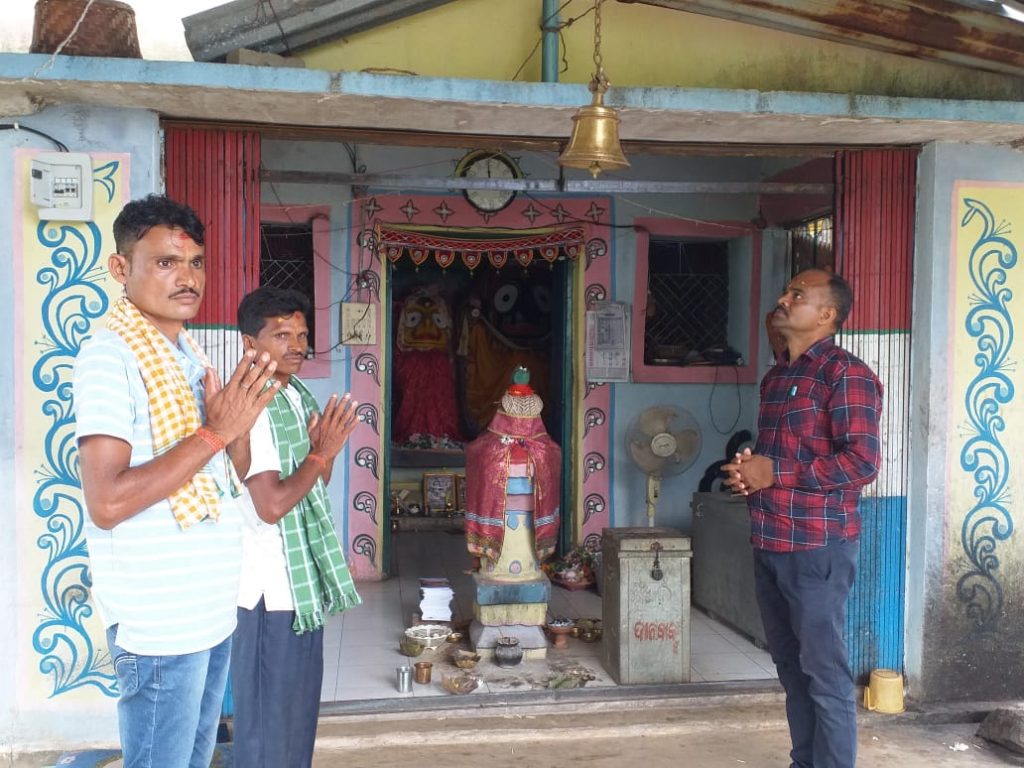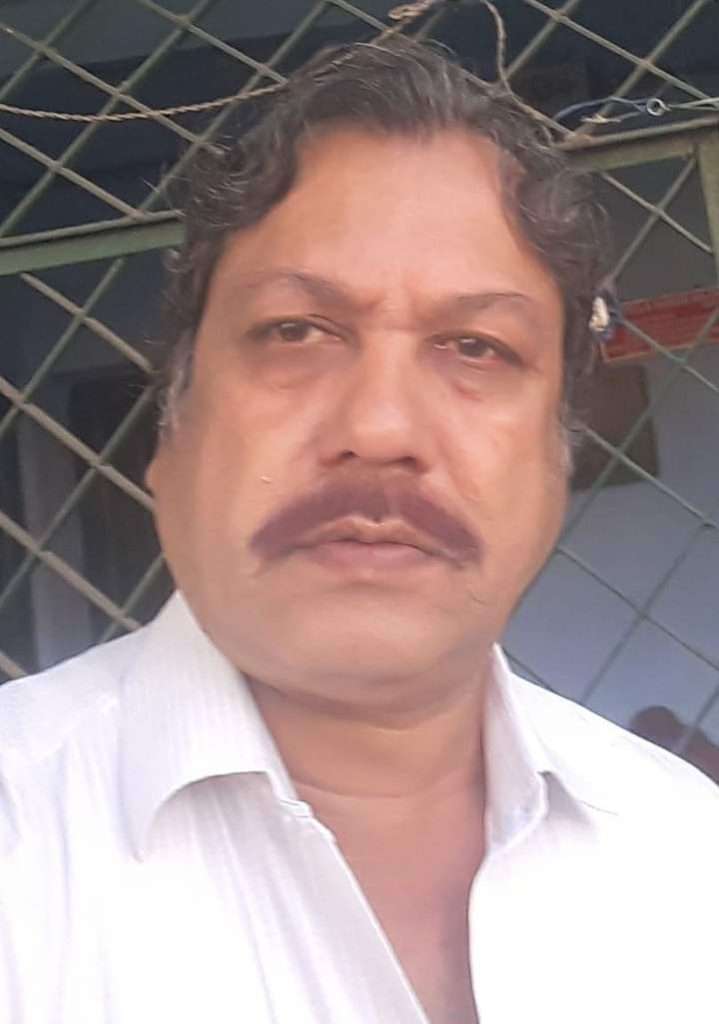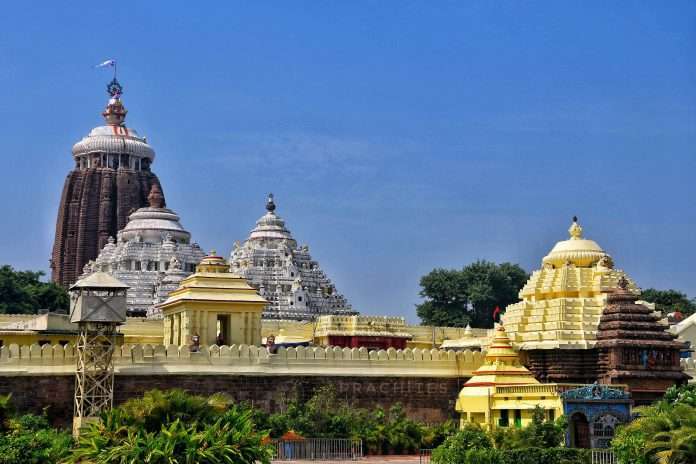Years back when I was in college, I used to see one student mentioning ‘LJNSS’ on the top right-hand corner in very small size every time he started writing something, be it a note or even an answer in the examination. It was a secret for a considerable period of time. But at long last, I could get the full form from him. It was “Lord Jagannath Swamy Sahaya,” meaning “Lord Jagannath Swamy will come to my help”. This is only an example of the influence of Lord Jagannath on the psyche of the people of Odisha. He is obviously the most popular deity throughout the length and breadth of the state and has exerted a profound influence on the Odia culture and tradition, which is often called ‘Jagannath Sanskruti’. Western Odisha does not lag behind in the matter where it has had a long tradition. There can hardly be a village without a Jagannath temple in the region. It is reported that the district of Sambalpur has the highest number of Jagannath temples in the state. The tradition of ‘Ratha Chhuan’, when a child is taken to the Rath or chariot, celebration of Rathyatra in the whole of western Odisha, and participation of Muslims in it in certain places make the Lord a supreme deity and His Yatra great in the region. At one time, the Jagannath cult became so popular and acceptable to the masses that in a temple dedicated to Devi Durga in Arda village near Sahaspur in the district of Sambalpur, an idol of His as Dadhibamana has been installed along with the Devi for worship, which normally does not happen.
Jagannath culture is very old and popular in western Odisha. In the early thirteenth century, king Anangabhimadev III of Puri had constructed many Jagannath temples in the region and made provision for cultivable land as grants for their management and ‘Bhogaraga’. The Dadhibamana temple at Tamparsara in the district of Bargarh is one of the oldest temples. In the fourteenth century, Ramai Dev, the founder of the Patna Chauhan kingdom, had constructed the Jagannath temple in Brahmapura village near Patnagarh in the district of Bolangir. He had brought the idols of Jagannath, Balabhadra, and Subhadra from Puri for installation. He had also brought thirteen Brahmin families to be at the service of the deities. This temple has been instrumental in the spread of Jagannath culture in western Odisha. Then the Brahmapura temple and Gopaljee Math of Sambalpur, the Jagannath temple of Sonepur, the Dadhibamana temple of Junagarh in the district of Kalahandi, and the Dadhibamana temple of Bhatli in the district of Bargarh are some of the oldest temples which have played a pivotal role in spreading the Jagannath cult in the area. Dating back to as early as the eighth century when philosopher king Indrabhuti along with Vajrayana Buddhism practised the worship of Lord Jagannath, western Odisha has not looked back in the matter. I have visited almost all the ‘Gadajatas’ of Odisha and found that Rathyatra is celebrated with great pomp and splendour in these places. Since the ‘Gadajata’ kings of the area had accepted the titular legacy of the king of Puri as Gajapati who was a staunch devotee of Lord Jagannath, it is only natural that the cult should spread over here with a profound influence on the people. It is also believed that king Indrabhuti practised Jagannath worship in Patali Shrikshetra on Trikuta hills near Kotsamlai in the district of Subarnapur. The two-day celebration of Rathyatra and Bahuda Yatra each in Sambalpur, celebration of Rathyatra in Anandapur and naming of the main Street as Badadanda, pulling of the chariot of Subhadra by women in Baripada and participation of Muslims in the festival in certain places bear testimony to the deep-rooted Jagannath tradition in the ‘Gadajata’ kingdoms.
The popularity of Lord Jagannath is such and the people of Odisha love and respect Him so much that lots of research and writings have been done on the cult and new theories have been forwarded in this regard:
- Traditions like ‘Ratha Chhuan’ or the touching of the chariot by a child are unique and can be found only in western Odisha. The two-day celebration of Rathyatra and Bahuda Yatra each in Sambalpur is also not found in any other place. The moving of the chariots of different temples of Sambalpur in a row without any change in the order from year to year is a speciality.
- Lord Jagannath is also a primitive God before the advent of the Aryans, and there has been an amalgamation of both Aryan and non-Aryan culture in Him. The worship of Neelamadhava at Kantilo also makes it clear that certain tribals were also Vaishnavites. Neelamadhava taking the form of Lord Jagannath is indicative of the attempt at amalgamation.
- Lord Jagannath has evolved out of the ‘Sthambheswari’ or ‘Khambeswari’ cult prevalent in the area. The wooden structure of Lord Jagannath is believed to have been an offshoot from this cult.
- Patali Shrikshetra on Trikuta hills near Kotsamlai in the district of Subarnapur has been the original Peetha of Lord Jagannath who has moved to eastern Odisha gradually. Certain researchers opine that the idols had only returned to their original Peetha when they were brought to be hidden over here.

Patali Shrikshetra is one of the oldest shrines of Lord Jagannath which is situated on Trikuta hills near Kotsamlai in the district of Subarnapur. It is approximately seventeen kilometres from Ullunda and twenty-eight kilometres from Sonepur. On the Sambalpur-Sonepur highway from Ullunda to the left, there is a motorable road up to Patali Shrikshetra. There are steps up to the temple constructed at a later time. While climbing the hill through the steps, one can have a panoramic view of Kotsamlai village, greeneries and a large pond below. There are three hills over here called Trikuta. The cave where the three idols were hidden is in the hills and jungles about three kilometres from the temple constructed at a later period. Legend has it that when Raktabahu, the Rashtrakuta king, attacked and plundered the Puri temple in the eighth century, the Pandas or priests came to this place by boat through the Mahanadi route in order to hide the idols from destruction. The idols were believed to have been hidden in Chhelia Pahada or hill. There are so many caves on the Trikuta hills and it is said that it was really difficult to identify the exact cave on the chhelia and Chandli hills where the idols were hidden for long one hundred and forty-four years before king Yayatikeshari took them to Puri. It is said that when Adishankaracharya could not find the idols in Puri temple through meditation, he could come to know that they had been hidden in a place near Sonepur. They were taken back to Puri by him and King Yayatikeshari. Indrabhuti, the king of Sambhal (Sambalpur), worshipped the idols in one cave in the eighth century while in another cave, the idols of Puri had been hidden. King Indrabhuti popularised the Jagannath cult in the area which was almost nonexistent prior to him. Legend has it that one snake led the way for the priests while the idols were being carried and in one place it changed its route. The place is Nakdein. It has come from the original word ‘Nagdein’ meaning ‘the snake jumped’. Baba Nageswar Mahadev gets worshipped here. It is believed that the Pandas who had carried the idols settled down in the area and now their future generations are living. The incident has been confirmed in the ‘Madala Panji’. The Puri temple authority has also accepted it as the place of hiding and named it as Patali Shrikshetra. Historians and researchers have also confirmed it. Still, then a lot of research and archaeological excavations are required to bring new facts to limelight regarding the place. It is only natural that myths, legends, and popular beliefs should weave around a popular cult. Though historians and researchers may require evidence it is really difficult to turn down these outright. Patali Shrikshetra is one of the most scenic spots having been a place of pilgrimage and tourist destination. Every year Rathyatra is celebrated with great pomp and splendour and devotees flock to the place from far and wide. The three deities are taken to a place near the pond where they stay till the Bahuda Yatra. In recent times, many developmental works have been undertaken on the site. With the great Jagannath culture around western Odisha has always progressed on a path of spiritualism with the rest of the state. There can hardly be a village without a Jagannath temple which speaks of the greatness of the culture. Here a child begins its life with a touching of the Lord. The Odia way of life is just unthinkable without the existence of Jagannath Swamy.
(The views expressed are the writer’s own)

Mr. Prafulla Kumar Majhi,
Retired Asst. Director, A. I. R, is an eminent Scholar and freelance writer in English & Odia. His areas of interests are sociocultural, economic, literary, historical and analytical studies and writings.

